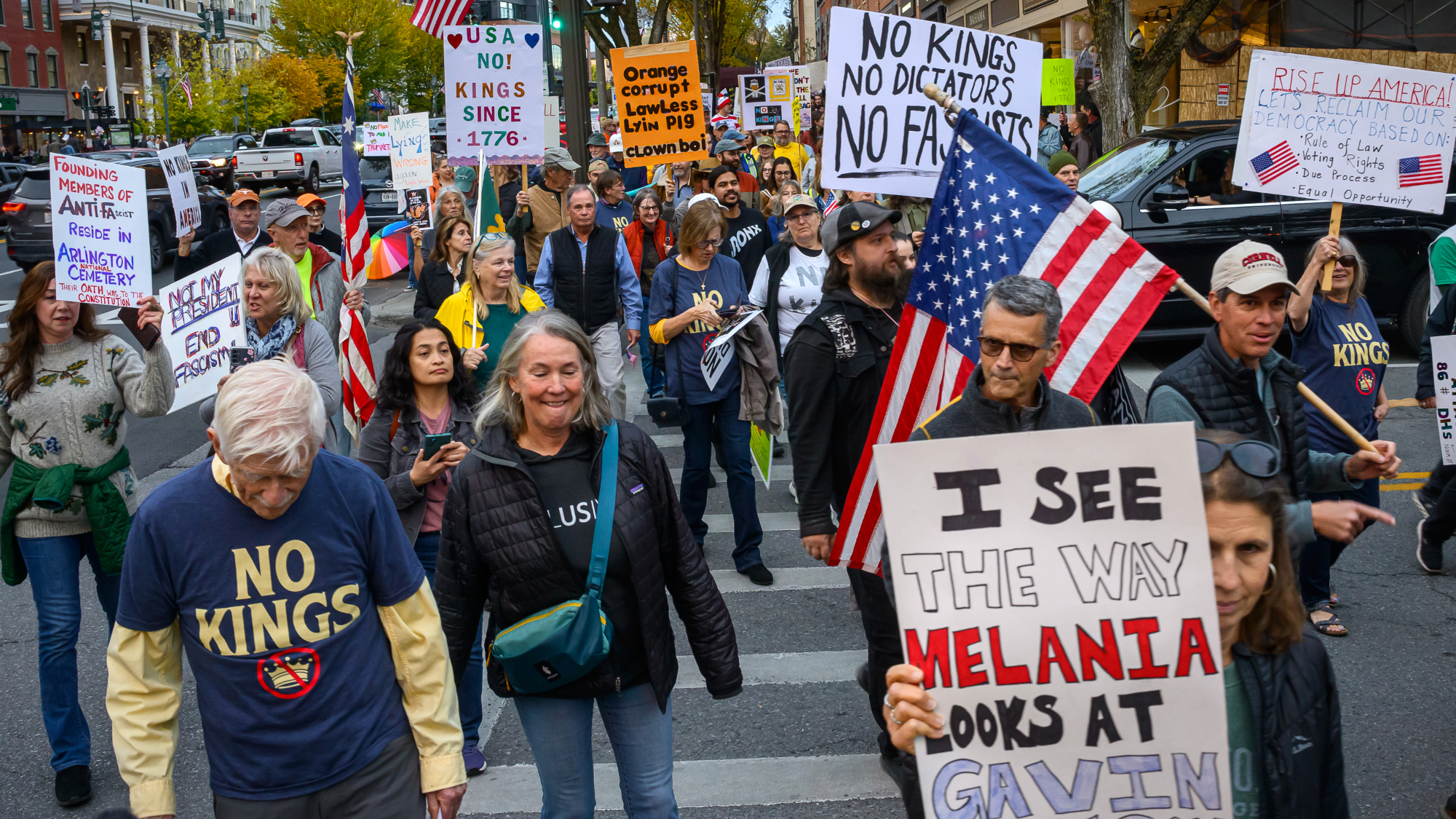Has gerrymandering backfired on Republicans?
The redistricting that secured the GOP a House majority could be pushing the party too far to the right


There would appear to be few drawbacks to locking up a durable majority in the House, which was what the GOP accomplished in once-in-a-decade redistricting that followed the 2010 census. But Alex Isenstadt at Politico touched off a debate this week by noting that, while the creation of a string of "ruby red districts" will keep Republicans in control of the lower chamber through 2014 and possibly even 2020, "the party could pay a steep price for that dominance."
GOP strategists and candidates are reportedly warning that the overwhelming conservative majorities in these gerrymandered districts make primary battles tougher to win than general elections. That, Isenstadt said, is "pushing House Republicans further to the right and narrowing the party's appeal at a time when some GOP leaders say its future rests on the opposite happening."
If you're looking for a root cause of the recurring drama within the House Republican Conference — from the surprise meltdown on the farm bill to the looming showdown over immigration reform — the increasingly conservative makeup of those districts is a good place to start. [Politico]
Robert Schlesinger at U.S. News & World Report agreed, arguing that the GOP's success in the last round of redistricting, which created an estimated 200 safe GOP districts in the 435-member House, was "proving Pyrrhic." Some conservatives think their challenge is not wooing moderates but more forcefully making the case for their own beliefs, but even some hardline Tea Party politicians are starting to recognize that their views aren't going over too well, even in some safe GOP districts. "That's a real problem for Republicans and it's one their redistricting success is only exacerbating," said Schlesinger.
The Week
Escape your echo chamber. Get the facts behind the news, plus analysis from multiple perspectives.

Sign up for The Week's Free Newsletters
From our morning news briefing to a weekly Good News Newsletter, get the best of The Week delivered directly to your inbox.
From our morning news briefing to a weekly Good News Newsletter, get the best of The Week delivered directly to your inbox.
Of course, carving out safe districts is a "two-way street," Sean Trende pointed out at Real Clear Politics. Democratic-controlled state legislatures also engaged in gerrymandering, leaving both parties with supporters concentrated in safe districts. Furthermore, Trende argued that it is wrong to conclude that the proliferation of safe districts is what's driving the two sides farther apart, noting that the Senate is as bitterly divided as the House.
The real underlying cause of the increasingly stark ideological divide in Congress, Trende said, is something more complex:
We have an ideologically polarized House and Senate because our country has become politically more polarized... Both parties are nearing historic lows in their approval ratings with the American people, although Democrats are faring a touch better than Republicans. Polarization is a boon to neither party. But it's being driven primarily by shifts in the country, not by gerrymandering. [Real Clear Politics]
A free daily email with the biggest news stories of the day – and the best features from TheWeek.com
Harold Maass is a contributing editor at The Week. He has been writing for The Week since the 2001 debut of the U.S. print edition and served as editor of TheWeek.com when it launched in 2008. Harold started his career as a newspaper reporter in South Florida and Haiti. He has previously worked for a variety of news outlets, including The Miami Herald, ABC News and Fox News, and for several years wrote a daily roundup of financial news for The Week and Yahoo Finance.
-
 How drones have detected a deadly threat to Arctic whales
How drones have detected a deadly threat to Arctic whalesUnder the radar Monitoring the sea in the air
-
 A running list of the US government figures Donald Trump has pardoned
A running list of the US government figures Donald Trump has pardonedin depth Clearing the slate for his favorite elected officials
-
 Ski town strikers fight rising cost of living
Ski town strikers fight rising cost of livingThe Explainer Telluride is the latest ski resort experiencing an instructor strike
-
 Bari Weiss’ ‘60 Minutes’ scandal is about more than one report
Bari Weiss’ ‘60 Minutes’ scandal is about more than one reportIN THE SPOTLIGHT By blocking an approved segment on a controversial prison holding US deportees in El Salvador, the editor-in-chief of CBS News has become the main story
-
 Has Zohran Mamdani shown the Democrats how to win again?
Has Zohran Mamdani shown the Democrats how to win again?Today’s Big Question New York City mayoral election touted as victory for left-wing populists but moderate centrist wins elsewhere present more complex path for Democratic Party
-
 Millions turn out for anti-Trump ‘No Kings’ rallies
Millions turn out for anti-Trump ‘No Kings’ ralliesSpeed Read An estimated 7 million people participated, 2 million more than at the first ‘No Kings’ protest in June
-
 Ghislaine Maxwell: angling for a Trump pardon
Ghislaine Maxwell: angling for a Trump pardonTalking Point Convicted sex trafficker's testimony could shed new light on president's links to Jeffrey Epstein
-
 The last words and final moments of 40 presidents
The last words and final moments of 40 presidentsThe Explainer Some are eloquent quotes worthy of the holders of the highest office in the nation, and others... aren't
-
 The JFK files: the truth at last?
The JFK files: the truth at last?In The Spotlight More than 64,000 previously classified documents relating the 1963 assassination of John F. Kennedy have been released by the Trump administration
-
 'Seriously, not literally': how should the world take Donald Trump?
'Seriously, not literally': how should the world take Donald Trump?Today's big question White House rhetoric and reality look likely to become increasingly blurred
-
 Will Trump's 'madman' strategy pay off?
Will Trump's 'madman' strategy pay off?Today's Big Question Incoming US president likes to seem unpredictable but, this time round, world leaders could be wise to his playbook
